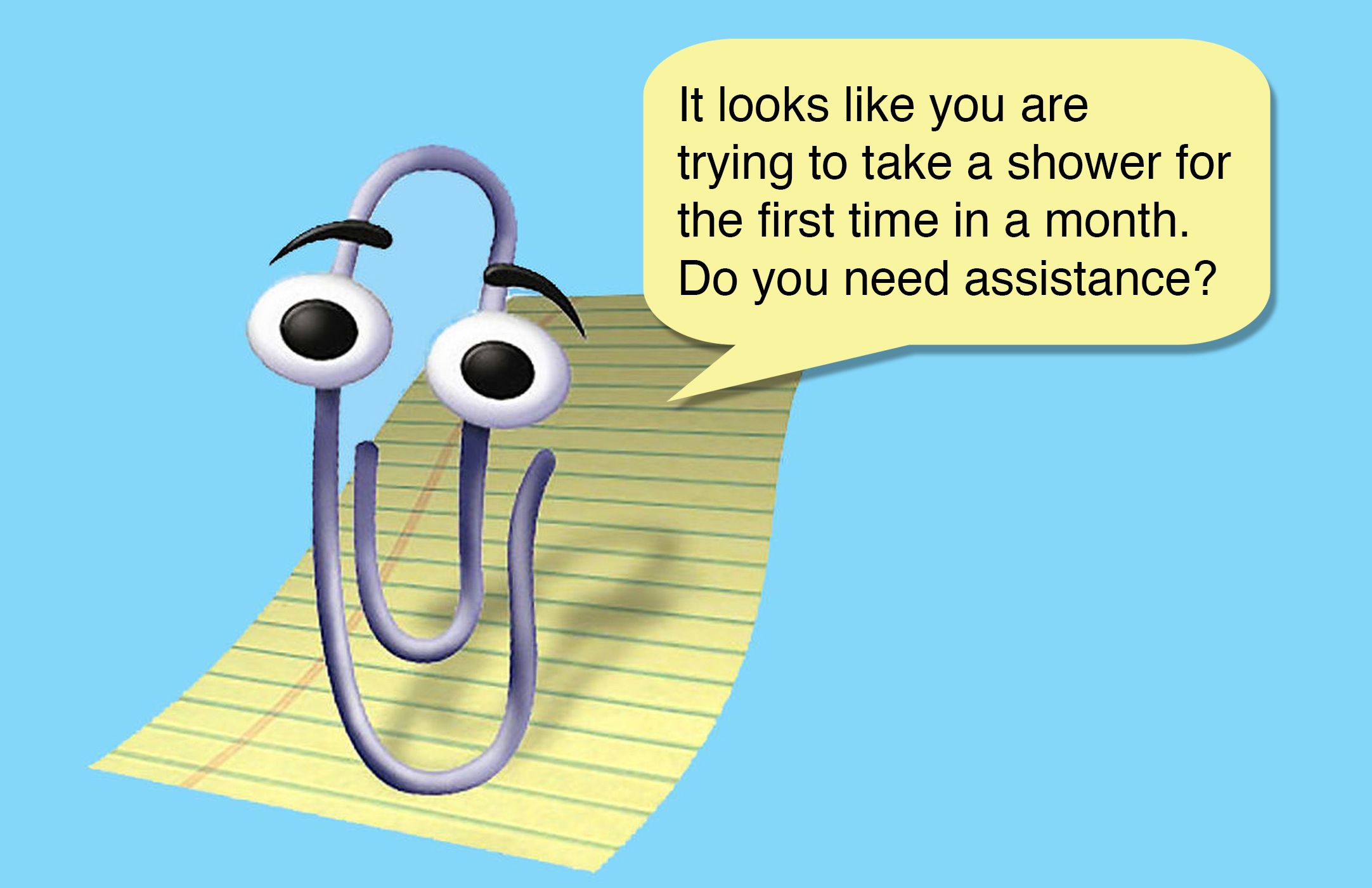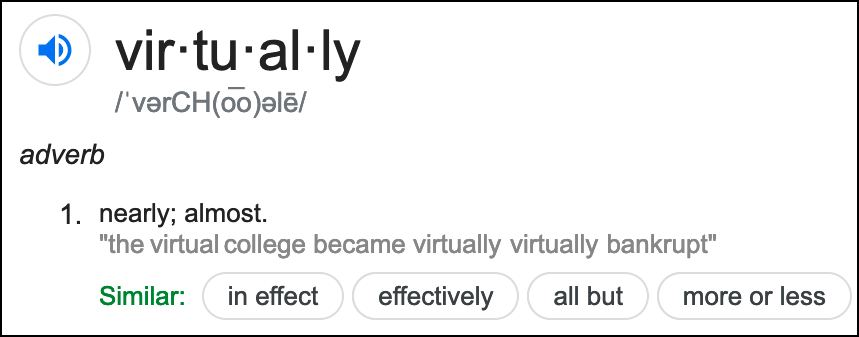
HOW DO WE ADAPT TO A MEDIUM WHERE SOMETHING "BETTER" IS JUST A CLICK OR SWIPE AWAY?
This is the fourth in a series of articles, written by Wrecking Ball SVP & General Manager Bob Donlon, on the subject of shaping the future of virtual events and conferences.
I talk to strangers.
Maybe it has something to do with having gone to high school in Times Square during the pre-Giuliani era, where strangers would get in your face and start yakking at you whether you liked it or not. It turned me into an “accidental extrovert” and gave me the skills to survive daily unwanted encounters with various hustlers and nut-jobs.
These skills have also served me well in times when work has called upon me to staff exhibit booths at conferences. I’ll chat anyone up, unless they’re clearly psychotic. That happens. There have been certain conferences where my colleagues and I had to develop coded physical gestures so we could rescue one another from such conversations. A scratch of the chin and a colleague would magically appear to pull me away for an “urgent and important meeting”.
That said, the kinds of surreptitious conversations which can happen at live conferences become even more meaningful and valuable as time goes by. The world of commerce is rapidly devolving to the point where the “chat bot” has become the lowest-common-denominator form of communication. Friendly customer support rep “Kenny” or “Whitney” magically appears in a chat window in the lower right corner of nearly every site you visit, asking how they can help. It’s the modern day equivalent of “Clippy” — that persistent cartoony nuisance who constantly showed up, uninvited, in Microsoft Word to disrupt our work. What kind of “help” would Clippy offer us today, if it were resurface in the era of shelter-in-place work-from-home?

In our world of diminishing human interaction, which can be especially difficult for us extroverts, let us consider how virtual events and conferences can be shaped in order to meet the wants of people like myself who thrive in face-to-face interactions. Here is a hypothetical case study involving an extroverted persona named “Claudia”.
Claudia is a payroll administrator at a baby food company. She has reached a breaking point at her job because the company’s payroll platform has become broken beyond reproach. Employees aren’t getting paid on time so they are becoming angrier by the minute. As a result, productivity has slowed to the point where strained mushy peas and carrots have completely disappeared from store shelves. The babies are pissed — their union, the “Diaper League Local 802 AFL-CIO” has declared a general strike. Claudia is in desperate need of a new payroll platform and must find a solution. Fast.
Luckily for her, the “National Association of Human Resources Humans” is having its annual conference. Because of COVID-19 its gone virtual so she’ll get a chance to learn about the latest and greatest in payroll admin platforms from the comfort of her “home office” (unfinished basement).
As an extrovert, one of the things Claudia really likes about the live conference experience is the energy of the people who staff the various booths in the exhibit hall — she feeds off of that. Even so, she finds the exhibit hall itself an unwieldy animal to wrassle with. Since exhibits are often grouped together in no particularly logical fashion, she often finds herself wandering about in a search for companies that offer the type of solution she is looking for. It’s a total time-suck, wears out her legs, fries her brain, and as a result she sometimes loses consciousness at the evening networking dinners. Nodding off into a bowl of lobster bisque is not exactly the best look for a human resources professional.
A key advantage of the virtual conference is we can do away with all that. In an online format, if done the right way, we can have a virtually infinite means of search, sorting, and discovery of virtual exhibitors in a virtually unlimited variety of virtual categorizations.

When crafting the search functionality of a virtual exhibit hall, the key principle to keep in mind is to
MAKE IT QUICK AND EASY FOR ATTENDEES TO SEARCH FOR AND FIND THE PRODUCTS AND SERVICES THEY ARE LOOKING FOR.
If Claudia is searching for “payroll administration platforms” and has to spend time weeding out exhibitors offering “performance review management platforms”, she’s going to turn in her own “performance review” at the end of the conference: “Exhibit hall sucks!”
OK, now Claudia has done her search and narrowed the exhibitors down to those that offer payroll administration platforms. There are 27 of them. She decides to have a brief read-through of the summary paragraph of each one. The first is a company is called PAY-ME-NOW TECHNOLOGIES and their summary paragraph reads:
“The mission of PAY-ME-NOW is to disrupt the thought leadership funnel by leveraging seamless distributed and scalable omnichannel dashboards which engage targeted awareness of optimized mission critical insights into big data learnings.”
Next!!!
PLEASE SPARE US THE MISSION STATEMENT.
The next search result is a company called “Personable Person Purse” (PPP) which has the following summary paragraph:
“Please your personnel with our powerful payroll platform that promptly puts pay in the pockets of your people.”
MAKE IT EASY FOR THE CUSTOMER TO UNDERSTAND WHAT IT IS YOU HAVE TO OFFER.
“Possibly the perfect platform” she thinks, and clicks through to their virtual exhibit.
Now that Claudia has found a potential vendor, and is willing to invest her time to visit their virtual booth, she comes with certain expectations based on her past experiences vising exhibits at live, physical conferences. In the live scenario she would want to:
- Get a high-level sense of whether the product/service is a good fit for her needs. This would normally be in the format of a stage presentation that includes a description of the value position, a demo of key features, and customer success stories. She’d be willing to invest 15–20 minutes of her time to watch the presentation, and if she’s not hooked on PPP within that timeframe she’d move on to the next exhibit. Assuming she’s taken the bait, her next step would be to:
- Dive deeper on the product. She would walk over to a demo pod staffed by a product expert who has in-depth knowledge of the product as well as its practical application. She could ask questions, get informed answers, and have a dialogue about her specific wants and needs based on her particular use-case scenario. If she determined the platform could be a good fit her company, her next step would be to:
- Talk to a sales rep to discuss pricing and deployment. Would the cost of the PPP platform fit within her budget constraints? Could she get it up and running quickly? Remember . . . the babies! They’re still out on strike! If all looked promising the sales rep would:
- Schedule a follow up for after the conference. Close the sale and deploy the product, fulfilling Claudia’s wants and needs. The promise of the live conference would be manifested!
With those expectations in mind, let’s think about how an exhibitor can meet Claudia’s needs in a virtual medium. An overarching reality to always keep in the front of your mind is:
IN A VIRTUAL CONFERENCE, SOMETHING “BETTER” IS JUST A CLICK OR SWIPE AWAY. HOOK AN ATTENDEE’S ATTENTION WITHIN THE FIRST 2 MINUTES OR YOU’RE SCREWED.
It’s the first day of the conference, Claudia just watched the keynote, and now she’s visiting the virtual exhibit floor. She’s done a search for payroll administration platform providers and discovered PPP — she decides to pay them a visit.
- Upon landing in the virtual booth, a 30-second commercial rolls. Unless it holds her attention, while communicating what the company has to offer, she bounces and moves on to the next exhibitor. Forget the 15–20 minutes of the live conference, the window of opportunity in the virtual world is waaaaaay narrower. After all it’s takes just a click or a swipe, as opposed to a 200 yard haul through a physical exhibit hall, to move on to the next “better” thing. But for now, let’s assume the best — that PPP invested in producing a kick-ass commercial. Claudia is hooked. Now she wants to:
- Deep-dive into the product. Remember, as an extrovert she wants to do this face-to-face with another human being — have an actual conversation, not wind up in a chat window. That will turn her off right away, her attention will be lost. Clicking on a “visit our demo pod” button, she is brought into a live video conference where a product specialist is in the midst of a demo. There’s a queue to allow attendees to, on a first-come-first-served basis, have a chance to interact with the product specialist without being interrupted by other attendees. I want to point out that this is a significant improvement in comparison to the live conference demo pod experience, where there are often several people vying for the attention of the product specialist at once. Claudia gets her turn, has an informed face-to-face conversation, and decides to take the next step. The product specialist passes her off into a virtual breakout room with:
- A sales rep. Via video conference they have a face-to-face 1:1 discussion about pricing and deployment. Since, in any sales scenario, body language is an important factor in building trust, they develop a rapport, agree on next steps, and ride off together into the sunset.
IN ORDER TO BUILD TRUST WITH AN EXTROVERT, A VIRTUAL CONFERENCE EXHIBITOR NEEDS TO OFFER FACE-TO-FACE INTERACTION.
So what about the wants and needs of the introvert — the flip side of the coin? That’s the topic of next week’s article. In the meantime I’m going to drag my extroverted ass down to Dolores park and have a meaningful face-mask to face-mask conversation with a total stranger and thus become that nut-job in Times Square, I guess.
Thanks for reading! We are always happy to have informed conversations on the topics of virtual events/conferences and digital marketing in general.
Published by: Bob Donlon in Expertise, UX/UI Design
Tags: virtual conferences, virtual events
Comments are closed.